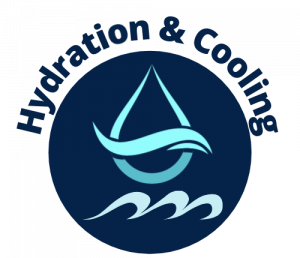When minutes matter: Discover the critical components every athletic trainer needs in their emergency heat response kit to prevent and address heat-related illnesses on the field.
_______________________________
Emergency Heat Response Kit: Essential Components for Athletic Trainers
In the high-stakes environment of athletic competition, heat-related illnesses can escalate from mild discomfort to life-threatening emergencies in minutes. For athletic trainers on the sidelines, having a comprehensive emergency heat response kit isn’t just good practice—it’s essential protection for your athletes. With temperatures rising and training intensities increasing, your preparation can make the critical difference between a minor incident and a serious medical emergency. This guide outlines the vital components every athletic trainer should include in their heat emergency toolkit and the protocols to implement when heat illness strikes. Athletic trainers must also educate athletes, coaches, and parents about prevention strategies to minimize the risk of heat-related illnesses. Incorporating heat safety tips for youth sports into training sessions can empower everyone involved to recognize early warning signs and take appropriate action. By fostering a culture of awareness and preparedness, athletic trainers can ensure a safer environment for young athletes competing in challenging conditions. Recognizing the signs of heat stress in athletes is crucial for timely intervention and can prevent severe complications. Educating athletes about the risks and symptoms of heat-related illnesses empowers them to communicate effectively about their condition during training sessions. By prioritizing heat safety measures, trainers can create a healthier environment that fosters optimal performance while safeguarding the well-being of their athletes.
Core Components of an Effective Heat Emergency Kit
The foundation of any comprehensive heat response strategy begins with the right equipment. Your emergency kit should be portable, clearly labeled, and contain these essential items:
Hydration Equipment
Rapid rehydration is crucial during heat emergencies. Your kit should include portable water dispensers that allow for quick access and efficient distribution among multiple athletes simultaneously. Team hydration stations with multiple spigots can serve several athletes at once, cutting down response time when every second counts. Include electrolyte replacement solutions that restore vital minerals lost through excessive sweating—these come in various forms including ready-to-drink formulas, dissolvable tablets, and powders that can be quickly mixed with water.
Cooling Devices
When body temperature soars, immediate cooling becomes your primary objective. Portable misting fans create cooling zones through flash evaporation, instantly reducing ambient temperature by up to 30 degrees. These systems are particularly valuable on sidelines where athletes rotate in and out of play. Cold-immersion tubs or collapsible cooling tubs should be readily available for rapid treatment of heat stroke, where core body temperature must be quickly reduced. Supplement these with cooling towels and ice packs for targeted cooling of pulse points and the neck, head, and armpits—areas where cooling has the most significant impact.
Monitoring Equipment
Accurate assessment tools help you identify heat issues before they become critical. Your kit should contain reliable thermometers for ambient temperature readings and medical-grade thermometers for accurately measuring an athlete’s core temperature. Humidity gauges are equally important as high humidity significantly impairs the body’s natural cooling mechanisms. Consider including WBGT (Wet Bulb Globe Temperature) meters, which measure heat stress in direct sunlight by combining temperature, humidity, wind speed, and solar radiation factors to give a comprehensive picture of environmental heat stress.
Medical Supplies
Be prepared to address symptoms while waiting for advanced medical care. Stock your kit with oral rehydration salts for mild dehydration cases, instant cold compresses that don’t require refrigeration, and blood pressure monitoring equipment to track vital signs during a heat emergency. Include clean towels, extra water for external cooling, and privacy screens or portable shade structures for treatment away from direct sunlight and public view.
Implementation and Response Protocols
Having the right equipment is only effective when paired with proper protocols and training. Every athletic department should establish clear procedures for:
Prevention Strategies
Prevention starts before athletes take the field. Schedule mandatory hydration breaks during practices and games, especially when the temperature climbs. Adjust training intensity and duration based on WBGT readings, and implement acclimatization periods when transitioning to hotter conditions. Create cooling zones with misting fans and shaded rest areas where athletes can regulate their body temperature during breaks.
Recognition Training
All coaching staff should be trained to recognize the spectrum of heat illnesses from mild heat cramps to severe heat stroke. Watch for early warning signs like excessive sweating, dizziness, headache, or unusual irritability. More serious symptoms include cessation of sweating, confusion, vomiting, or collapse. Remember that an athlete’s verbal assurance that they’re “fine” should never override objective observation of symptoms.
Emergency Response Plan
When heat illness is suspected, quick action is essential. Immediately move the affected athlete to a cooling zone, begin hydration if conscious, and apply cooling methods appropriate to their condition. For suspected heat stroke, immerse in cold water if available, or apply ice packs to neck, armpits, and groin while awaiting emergency medical services. Assign specific roles to team members—who will contact EMS, who will begin cooling procedures, who will monitor vital signs—to ensure no critical steps are missed in the heat of the moment.
Take Action Today to Protect Your Athletes
Don’t wait for a heat emergency to test your preparation. Contact Hydration & Cooling at 828-820-8600 to discuss customized hydration and cooling solutions for your athletic program. Our experts can help you select the right combination of hydration stations and cooling equipment to build a comprehensive heat safety system that protects your athletes when temperatures rise. Remember our promise: When Life Gets Hot • We Do Cool!
